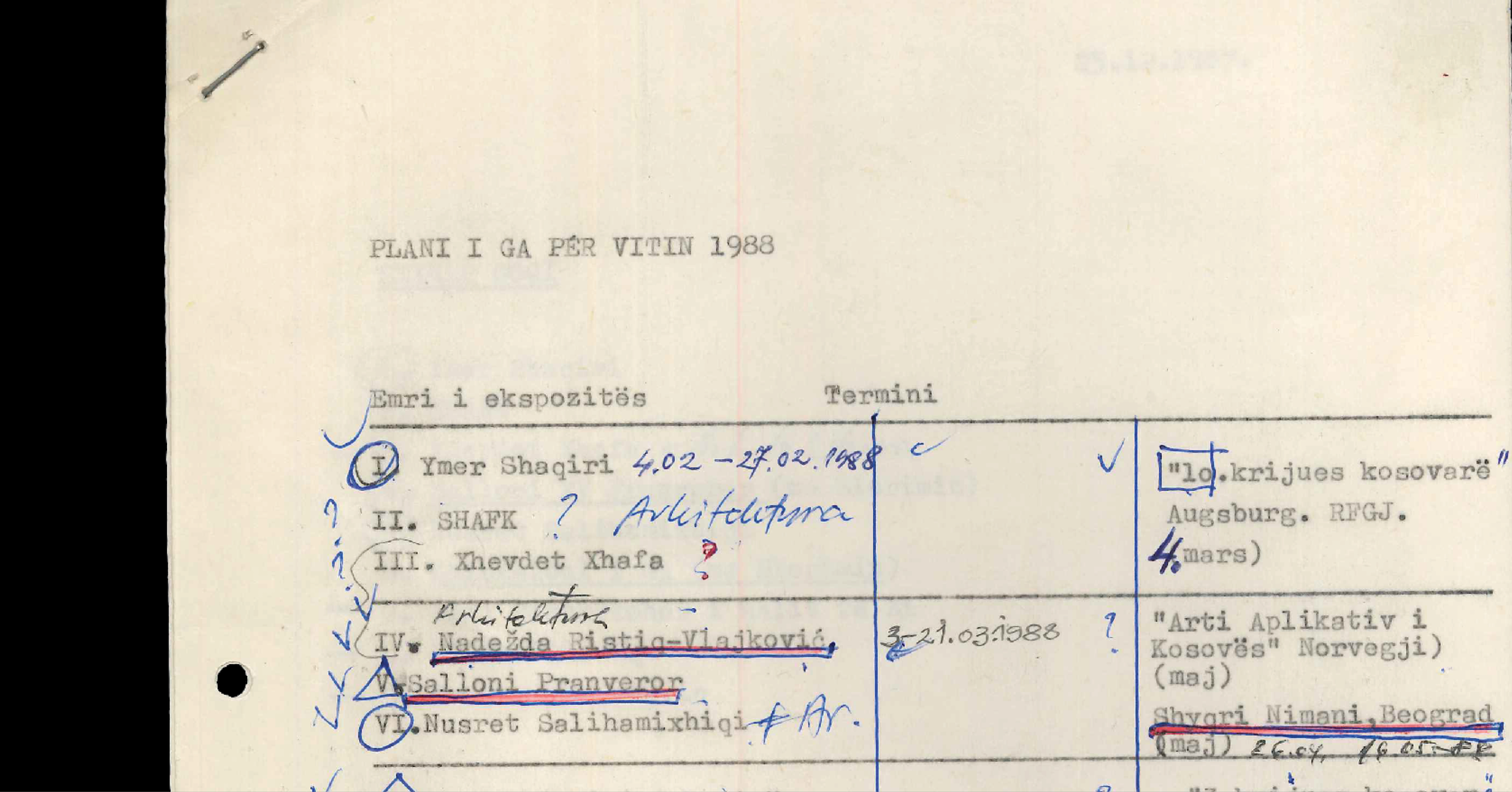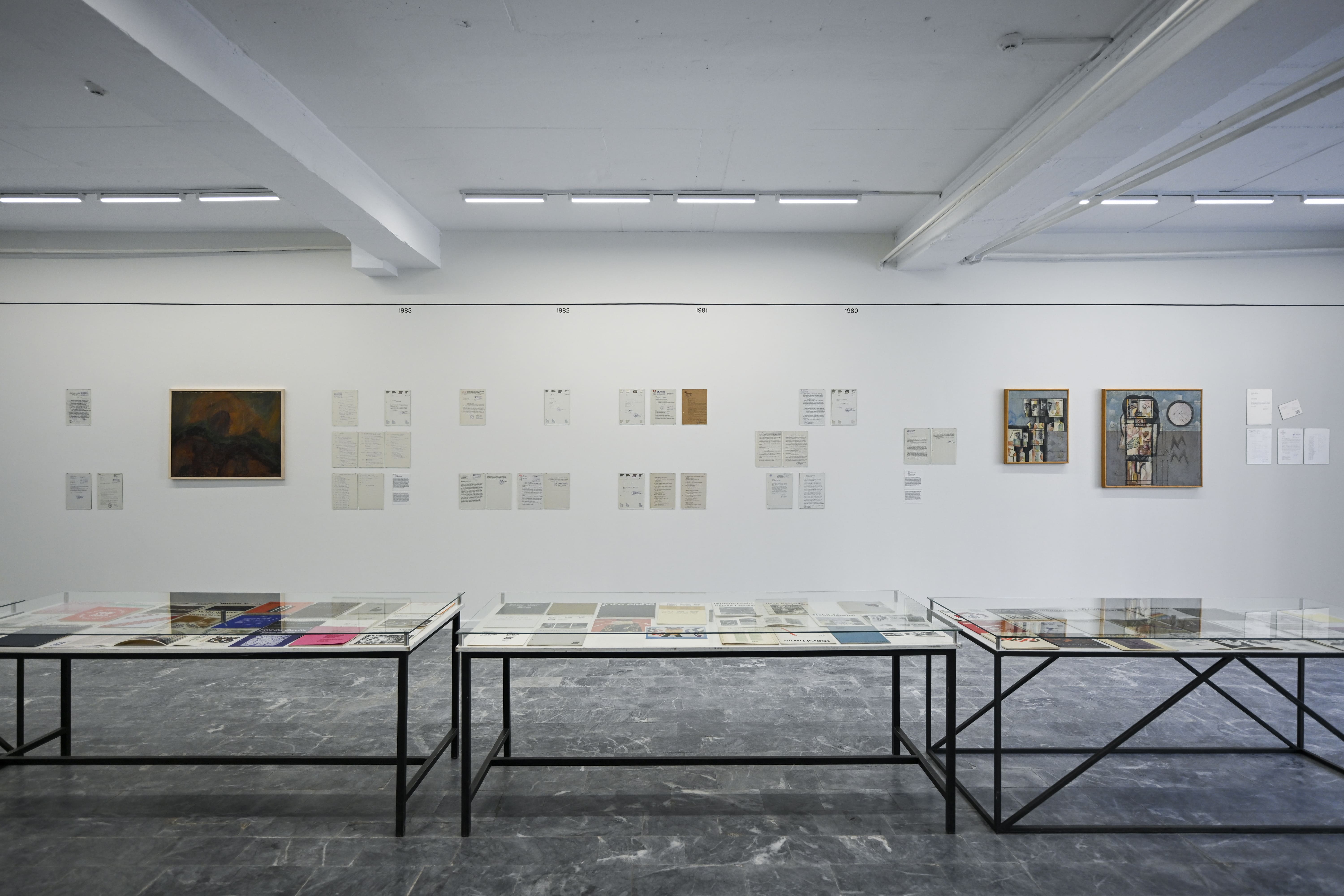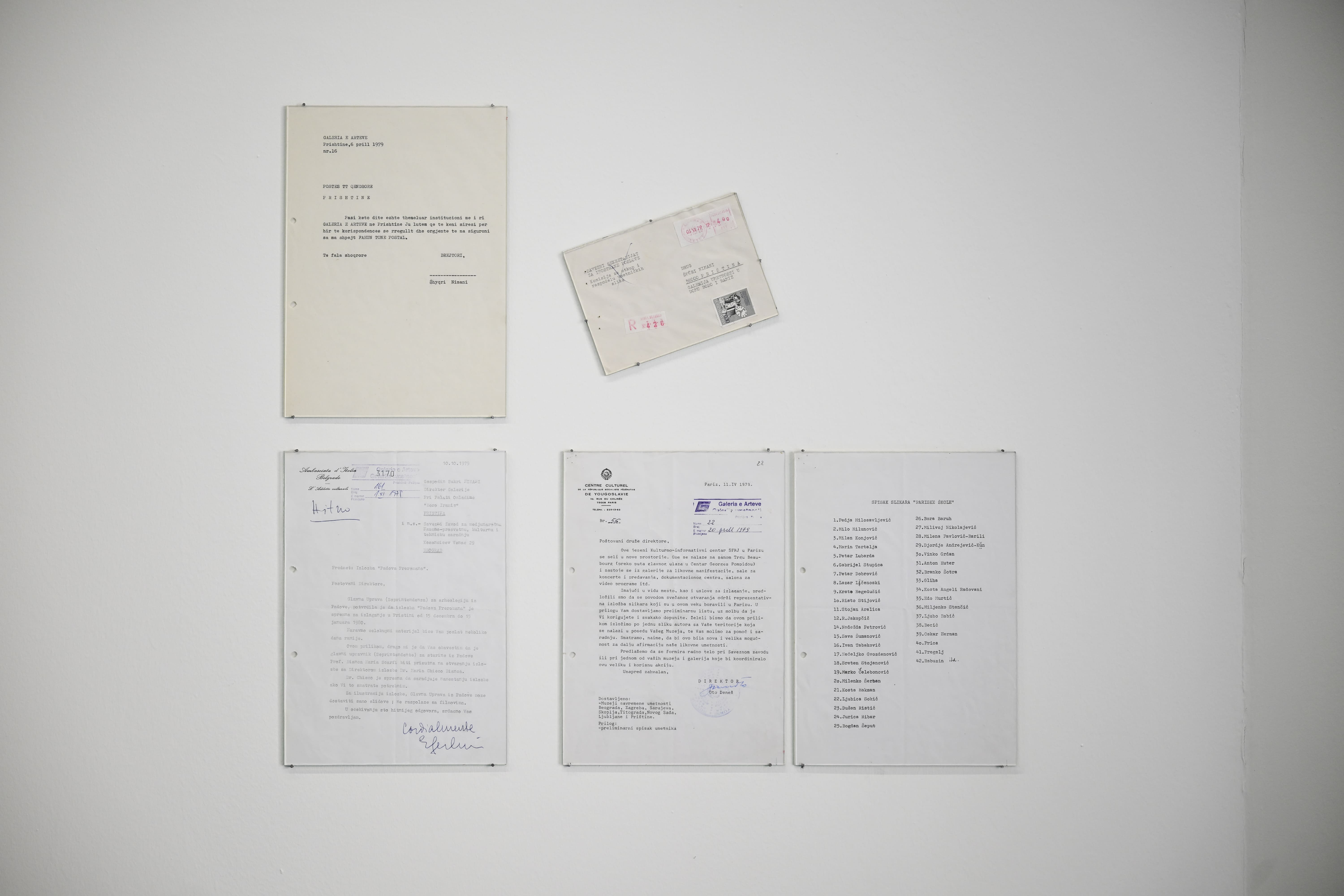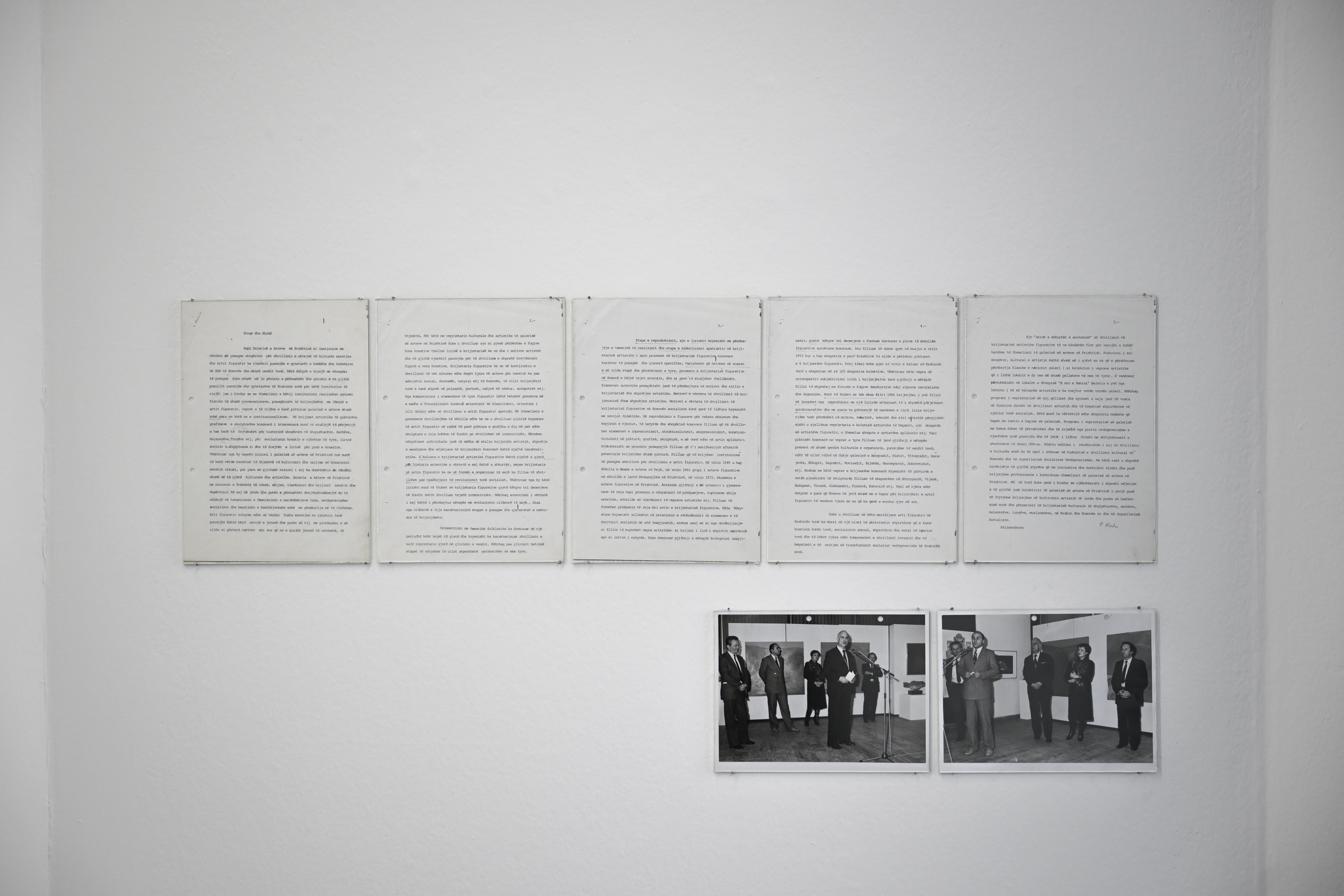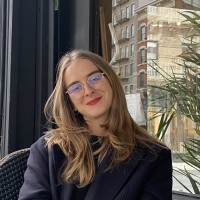From the Archives: Kind Regards
“Archives are not inert historical collections. They always stand in an active, dialogic relation to the questions the present puts to the past; and the present always puts its questions differently from one generation to another. The archive has to be rich, varied, and in a sense ‘eclectic’ enough to bear the weight of contested interpretations and to allow them to battle out their differences in relation to the different texts and inter-texts which the archive itself makes available,” writes Stuart Hall in Constituting an Archive.
Revisiting the moments that shaped the formation of the institution, the exhibition turns to the first decade (1979–1989) of the National Gallery of Kosovo (NGK) through its archive of letters, requests, and official documents. The fragments presented reveal both the aspirations of a young institution and the bureaucratic negotiations and structural limits it had to navigate. Correspondences, ranging from requests for collaborations and opening speeches to exchanges with artists and state authorities, show how the gallery sought to position itself between local urgencies and international cultural circuits amid Yugoslavia’s shifting political context.
Placed within the broader landscape of cultural and educational institution-building, the establishment of the NGK marked a significant moment in the development of Kosovo’s cultural scene during the 1970s and 1980s. This period of growth, however, was abruptly halted by the violent annexation of Kosovo in the 1990s, which resulted in the closure of cultural and academic institutions.
Read today, these letters move beyond the confines of administrative language. They disclose the personal voices of directors, artists, curators, and cultural officials as they negotiated questions of visibility, bureaucracy, and belonging. Among them, one notable exchange is a letter addressed to Ibrahim Kodra, requesting the donation of works detained in customs. His reply is more than a matter-of-fact confirmation: it is a gesture of solidarity in the face of geopolitical bureaucracy, where cultural exchange was often suspended by regulation. Letters from artists requesting exhibitions, or from the gallery board negotiating program decisions, register both opportunity and exclusion. Among them is a handwritten request by Alije Vokshi, a pioneering woman artist, who submitted her biography and curriculum vitae in hopes of inclusion. The exhibition was ultimately not accepted, a seemingly minor omission that nevertheless points to the structural marginalization of women artists within institutional frameworks of the time. Her letter, one of many of this character preserved in the archive, makes visible the persistence of individual artistic desire. Read against the grain, such documents are a reminder that the archive preserves not only the narratives of what was made possible, but also those of what was deferred, denied, or erased.
Selected artworks from the collection, whose authors appear in the correspondences and catalogues on display, are put in conversation with these archival traces. The letters reveal the conditions of their arrival, circulation, role within the scene or the institution, or omission, indicating that institutional memory develops alongside the objects it preserves.
As a newly established institution, the NGK was well networked. This becomes visible through the exchanges received from the Provincial Committee for Foreign Relations which trace the international collaborations and traveling exhibitions that shaped the gallery’s program. In addition to regional exchanges with museums across the Yugoslav federation and its provinces, the archives document collaborations with institutions in countries such as Mexico, India, Egypt, Argentina, and Armenia. These connections emerged directly from Yugoslavia’s involvement in the Non-Aligned Movement. Many of the international exhibitions circulated through the region under the coordination of the Yugoslav Centers for Culture. While this centralized oversight facilitated mobility, it also underscored the propagandistic function of cultural diplomacy, revealing the degree of control and obligation under which the gallery operated.
Complementing these correspondences are catalogues from the same period, selected in collaboration with the graphic designers, Nita Salihu Hoxha and Bardhi Haliti, REDO Prishtina founders, which highlight the graphic design aesthetics that shaped the gallery’s public image. These printed materials symbolized the gallery’s cultural outreach while embodying the visual language of a decade in which modernist impulses were localized through typographic, layout, and design choices.
Together, these letters, catalogues, and administrative documents offer an intimate portrait of the gallery’s first decade, one marked by Yugoslav politics. The words of directors, curators, artists, and administrators, penned in typewritten lines, speak to the optimism of creation and the fragile labor of cultural and knowledge production within shifting political regimes.
Curated by Hana Halilaj
[3] Hall, Stuart. “Constituting an Archive.” Third Text 15, no. 54 (2001): 89–92. https://doi.org/10.1080/09528820108576903.
[4] The Non-Aligned Movement (NAM) emerged during the Cold War as a collective of countries that sought to avoid alignment with either the Western or Eastern blocs (USA or USSR). It emphasized cultural independence and the rejection of hegemonic power structures, aiming to promote sovereign equality and peaceful coexistence among nations.
Piškur, Bojana. “Non-Aligned Movement.” Glossary of Terms – Referential Fields. Museum of Contemporary Art Ljubljana.
https://glossary.mg-lj.si/referential-fields/commons/non-aligned-movement
